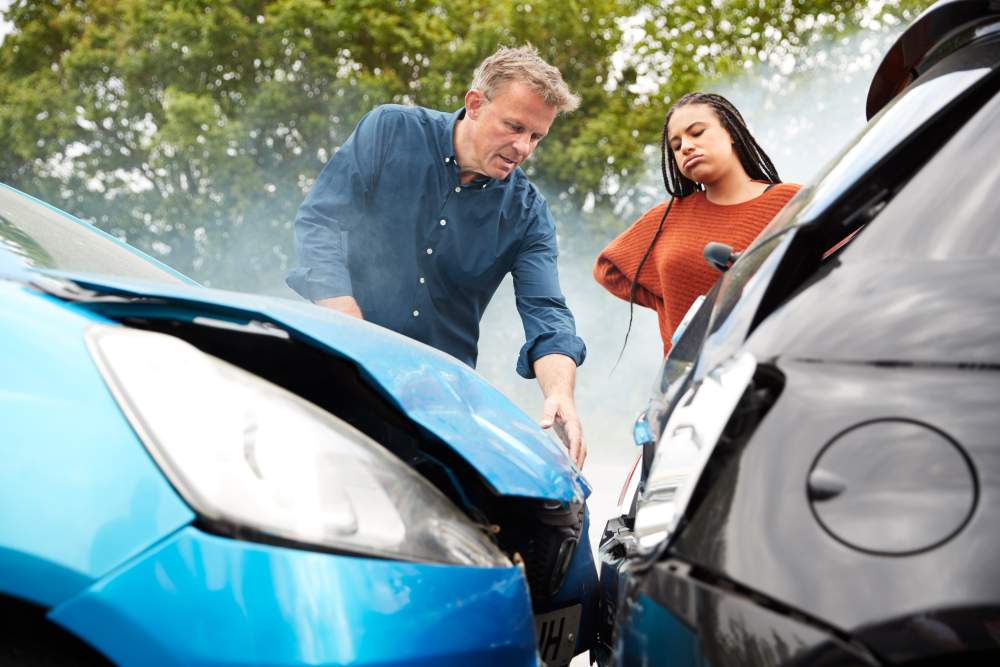What to Do After a Car Accident That’s Not Your Fault in California?

Car accidents are an unfortunate reality on California’s roads, and even the most cautious drivers can find themselves involved in a collision through no fault of their own. The immediate aftermath of such an incident can be incredibly stressful and confusing, with emotions running high and numerous tasks demanding your attention. From dealing with potential injuries to managing the chaos at the accident scene, knowing what to do next can seem overwhelming. In these critical moments, clearly understanding the necessary steps can make all the difference in protecting your rights and ensuring you receive fair compensation.
Understanding exactly what actions to take after an accident where you are not at fault is crucial for your recovery and future well-being. This blog post is designed to provide clear, actionable steps to address the immediate chaos following an accident. These guidelines can help safeguard your health, document crucial evidence, and streamline dealing with insurance companies and legal matters. We aim to equip you with the knowledge to handle this challenging situation effectively, reducing stress and paving the way for a smoother recovery.
Immediate Actions at the Scene
- Ensure Safety: Your priority should be ensuring the safety of everyone involved. If it is safe, move your vehicle out of traffic to a secure location, such as the shoulder of the road or a nearby parking lot. Turn on your hazard lights to alert other drivers. This helps prevent further accidents and reduces the risk of additional injuries.
- Check for Injuries: Carefully assess yourself and others for any injuries. Even if you feel fine, remember that some injuries may not be immediately apparent due to adrenaline. Check on passengers, other drivers, and any pedestrians involved. If anyone is injured, call 911 immediately to request medical assistance. Do not attempt to move seriously injured individuals unless they are in immediate danger, as this could exacerbate their injuries.
- Contact Law Enforcement: Reporting the accident to the police is crucial, especially in cases involving significant property damage or injuries or if the other party is uncooperative. Wait for law enforcement to arrive and provide a detailed account of the incident. A police report can be an essential piece of evidence when filing insurance claims or pursuing legal action.
- Exchange Information: Collect essential information from all parties involved in the accident. This includes names, phone numbers, addresses, driver’s license numbers, and insurance details. Be sure also to note the make, model, and license plate numbers of all vehicles involved. This information is vital for insurance claims and any potential legal proceedings.
- Document the Scene: Use your phone or a camera to take comprehensive photos and videos of the accident scene. Capture images of vehicle damages, skid marks, road conditions, traffic signs, and any visible injuries. Take wide shots to show the overall context of the scene and close-ups of specific damages and injuries. This visual evidence can prove what happened and support your claim.
Reporting And Filing a Claim

- Notify Your Insurance Company: As soon as possible after the accident, contact your insurance company to report the incident. Provide them with all the information you have gathered, including the other party’s contact details, witness statements, photos, and the police report number. Most insurance policies require prompt reporting, and failing to do so can result in delays or complications with your claim.
- File a Claim: If the other driver is at fault, you must initiate the claims process with their insurance company. Contact their insurer and provide them with the details of the accident, along with the evidence you have collected. This process typically involves filling out a claims form and submitting supporting documents. Be prepared to answer questions about the accident and provide any additional information they may request. The insurer will investigate the claim, which may involve speaking with witnesses, reviewing the police report, and assessing vehicle damage. It’s essential to follow up regularly and keep records of all communications.
- Understand Your Rights: Familiarize yourself with California’s “pure comparative negligence” rule, which allows you to recover damages even if you are partially at fault for the accident. Under this rule, your compensation will be reduced by the percentage of fault assigned to you. For example, if you are found to be 20% at fault, you can still recover 80% of your total damages. Knowing this can help you understand the settlement process and negotiate effectively with the insurance company. Additionally, being aware of your rights can prevent you from being taken advantage of by the at-fault party’s insurer or pressured into accepting an unfair settlement.
You can manage the reporting and claims process more effectively by promptly notifying your insurance company, properly filing a claim with the at-fault party’s insurer, and understanding your rights under California law. This ensures you are well-positioned to receive the compensation you deserve for your injuries and damages.
How Is Fault Determined For Car Accidents In California?
In California, car accident fault is determined through police reports, insurance investigations, and sometimes legal proceedings. Here’s an overview of the process:
- Police Reports: Law enforcement officers typically respond to the scene and create a detailed report when a car accident occurs. This report includes information such as:
- The location and time of the accident.
- Statements from drivers, passengers, and witnesses.
- Observations of the officers, including any traffic violations.
- Diagrams of the accident scene. The police report often includes the officer’s assessment of fault, which can significantly influence insurance claims and legal outcomes.
- Insurance Investigations: Both parties involved in the accident will report the incident to their respective insurance companies. Each insurer conducts its investigation to determine fault, which includes:
- Reviewing the police report.
- Inspecting vehicle damage.
- Interviewing witnesses.
- Analyzing photos and videos from the scene. Insurance adjusters use this information to assign fault percentages to each party involved in the accident.
- Comparative Negligence: California follows a “pure comparative negligence” rule, which means that each party involved in the accident can be assigned a percentage of fault. Compensation is then adjusted based on these percentages. For example, if you are found to be 30% at fault for an accident, you can still recover 70% of your damages from the other party.
- Legal Proceedings: If there is a dispute about fault or if the parties cannot reach a settlement through insurance, the case may go to court. Both sides present evidence in court, including the police report, witness testimonies, and expert analyses. The judge or jury then determines the fault percentages.
Factors Considered in Determining Fault
- Traffic Violations: Any violation of traffic laws, such as running a red light or speeding, can indicate fault.
- Witness Statements: Eyewitnesses can provide crucial information about how the accident occurred.
- Physical Evidence: Skid marks, vehicle damage, and road conditions are analyzed to reconstruct the accident.
- Driver Behavior: Actions of the drivers before the accident, such as using a mobile phone or driving under the influence, are considered.
For more detailed information, refer to the California DMV’s resources on vehicle collisions and the California Highway Patrol.
FAQs
Do I have to pay a deductible if I am not at fault for an accident in California?
If you are not at fault for an accident and file a claim with the at-fault driver’s insurance company, you should not have to pay a deductible. However, if you file a claim with your insurance company under collision coverage, you might have to pay the deductible upfront. Your insurance company may then pursue subrogation from the at-fault driver’s insurer to recover the costs, including your deductible. If successful, your insurer will reimburse you for the deductible amount.
What happens after I file a claim with my insurance company?
After you file a claim with your insurance company, the following steps typically occur:
- Claim Assignment: An adjuster is assigned to your case.
- Investigation: The adjuster investigates the details of the accident, which may include reviewing the police report, interviewing witnesses, and assessing vehicle damage.
- Evaluation: The adjuster evaluates the extent of the damage and determines the compensation amount based on the policy coverage.
- Settlement: The insurance company will offer a settlement amount to cover the repairs and medical expenses. If the settlement is accepted, the payment is processed.
Should I Hire a Lawyer for a Car Accident That Was Not My Fault?
While it is not legally required to hire a lawyer, doing so can be beneficial, especially if:
- You suffered significant injuries or damages.
- There is a dispute over who is at fault.
- The insurance company offers a low settlement.
- You are unfamiliar with the claims process or feel overwhelmed.
A lawyer can help you navigate the legal process, negotiate with insurance companies, and ensure you receive fair compensation.
How much time do I have to file a personal injury claim for a car accident?
In California, you generally have two years from the accident date to file a personal injury lawsuit. This time limit is known as the statute of limitations. You may lose your right to pursue compensation if you do not file within this period. For property damage claims, the statute of
Benji Personal Injury Can Help With Your Car Accident That’s Not Your Fault
The aftermath of a car accident can be daunting, especially when you are not at fault. Knowing the proper steps to take—from ensuring safety and gathering evidence to filing claims and understanding your legal rights—can significantly impact the outcome of your case. Following these guidelines can protect your interests and ensure a smoother recovery process. At Benji Personal Injury, we are committed to providing you with the support and expertise you need during this challenging time. Our experienced team will guide you through the complexities of insurance claims and legal proceedings, fighting to secure the compensation you deserve. Don’t face this ordeal alone; let Benji Personal Injury advocate for your rights and help you get back on track. Contact us today for a free consultation and take the first step towards your recovery. Contact us today.

 AVAILABLE 24/7
AVAILABLE 24/7


